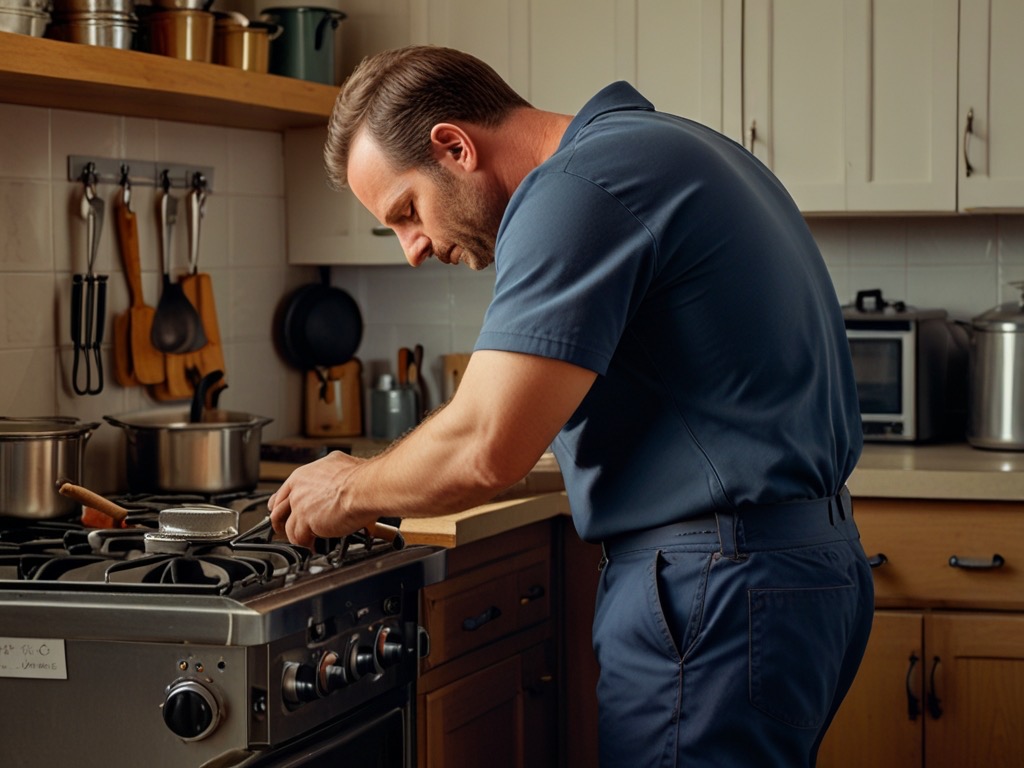Choosing the right hob for your kitchen is an essential decision that impacts both functionality and aesthetics. A well-chosen hob can enhance your cooking experience and complement your kitchen design, while a poorly chosen one can lead to frustration and inefficiency. Here’s a guide to help you select the perfect hob for your kitchen, considering size, style, and functionality.
Assess Your Kitchen Size
The size of your kitchen plays a pivotal role in determining the type of hob that will suit your needs. Here’s how to evaluate your kitchen space:
- Measure Your Countertop Space: Start by measuring the available space on your countertop. Ensure there’s enough room not only for the hob but also for other essential kitchen appliances and preparation areas.
⠀
- Consider Kitchen Layout: The layout of your kitchen (U-shaped, L-shaped, galley, or open-plan) can influence where your hob will be most efficiently placed. Make sure there’s enough clearance around the hob for safety and ease of use.
⠀
- Account for Ventilation: Good ventilation is crucial, especially in smaller kitchens. Plan for an appropriate exhaust system to avoid cooking fumes and odors from lingering.
Types of Hobs
Hobs come in various types, each with its own set of advantages and disadvantages. Your kitchen size and cooking habits will largely determine the best fit.
- Gas Hobs:
– Pros: Instant heat control, compatible with all types of cookware.
– Cons: Requires a gas connection, which can limit placement options.
– Best For: Medium to large kitchens where installation flexibility and precise heat control are priorities.
⠀
- Electric Hobs:
– Pros: Smooth surface, easy to clean, modern look.
– Cons: Slower heat response compared to gas, can be expensive to run.
– Best For: Small to medium kitchens with a preference for sleek design and easy maintenance.
⠀
- Induction Hobs:
– Pros: Fast heating, energy-efficient, cools down quickly, safe (surface stays cool to touch).
– Cons: Requires compatible cookware, can be costly upfront.
– Best For: Small kitchens where safety and energy efficiency are important.
⠀
- Ceramic Hobs:
– Pros: Affordable, stylish, easy to clean.
– Cons: Slower to heat and cool, less efficient than induction.
– Best For: Budget-conscious homeowners with medium to large kitchens.
Number of Burners
The number of burners or cooking zones on your hob should correspond to your cooking habits and kitchen size.
- Two Burners: Ideal for small kitchens or those who cook simple meals.
- Three to Four Burners: Suitable for medium-sized kitchens and regular cooking.
- Five or More Burners: Best for large kitchens or households with high cooking demands.
⠀
Style and Aesthetics
⠀
The hob is a focal point in many kitchens, so its style should complement your overall kitchen design.
⠀
- Modern Kitchens: Induction and electric hobs with sleek, smooth surfaces fit well in modern kitchens.
- Traditional Kitchens: Gas hobs with visible flames and sturdy cast-iron supports can enhance the traditional look.
- Minimalist Kitchens: Ceramic or induction hobs with clean lines and minimal controls maintain a minimalist aesthetic.
Budget Considerations
Your budget will also influence your choice. While induction hobs offer many benefits, they tend to be more expensive. Gas and electric hobs provide good performance at various price points.
- Low Budget: Ceramic or gas hobs are often the most affordable.
- Medium Budget: Consider higher-end gas hobs or basic induction models.
- High Budget: Premium induction hobs with advanced features.
Installation and Maintenance
Ease of installation and maintenance should not be overlooked. Gas hobs require professional installation due to safety concerns. Electric and induction hobs are generally easier to install but may still need an electrician for wiring.
- Installation: Ensure you have professional installation, especially for gas hobs, to comply with safety standards.
- Maintenance: Induction and electric hobs are easier to clean due to their smooth surfaces. Gas hobs require more effort to clean burners and grates.
Choosing the right hob for your kitchen involves balancing size, type, number of burners, style, budget, and installation considerations. By carefully evaluating your kitchen space and cooking needs, you can find a hob that enhances both functionality and aesthetics.
For expert advice and installation, trust the professionals at HOME APPLIANCE SERVICE CENTER. Our experienced team can help you choose and install the perfect hob for your kitchen, ensuring it meets all your needs and preferences. Contact us today to get started on transforming your kitchen into a chef’s paradise.
Contact us
 619-928-5000
619-928-5000  Request Service
Request Service 
